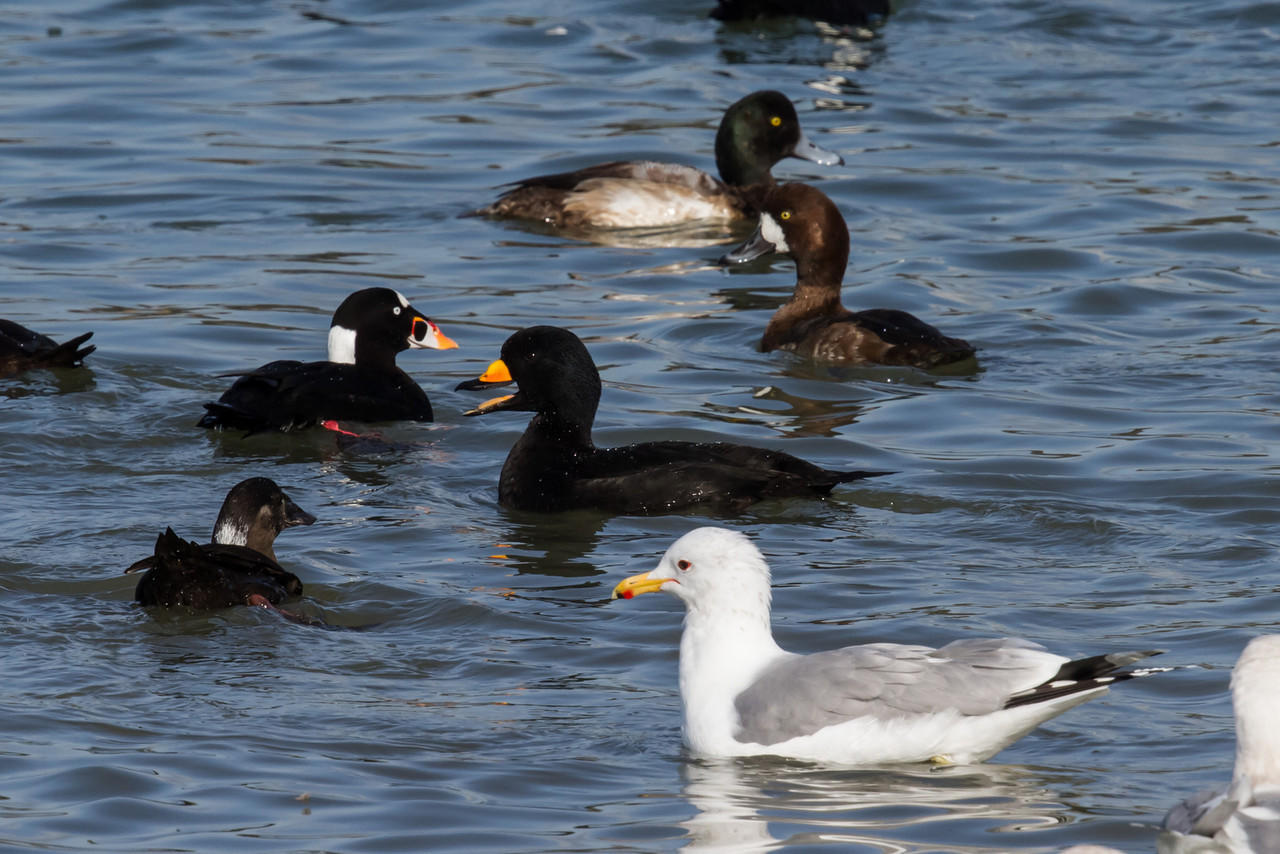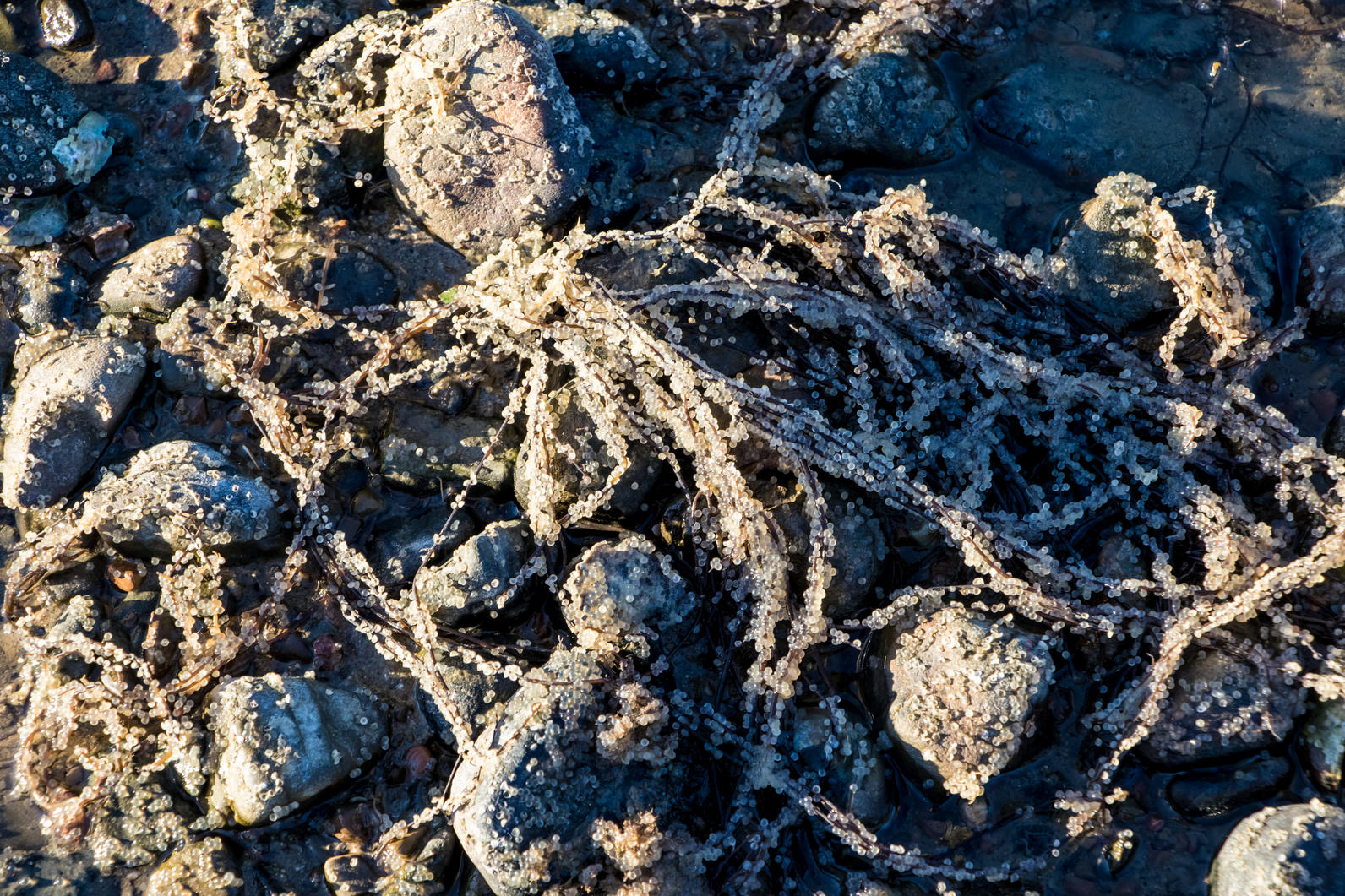Video by Tony Brake of birds responding to herring run at Pt. Molate and Pt. Richmond.
The first major herring spawning events of the year are taking place right now in Richardson Bay Bay (Marin County) and Ferry Point (Richmond), two key herring spawning hotspots in San Francisco Bay. Herring have also been spawning in Tomales Bay, just to the north. Thousands of birds including Pacific Brown Pelicans, Surf Scoters, scaup, Bufflheads, grebes, loon and cormorants are pursuing the energy-rich fish and roe (eggs), creating a glorious wildlife spectacle.
These herring also support one of the nation’s last urban fisheries with about 10 boats presently landing fish during the January-March commercial fishing season. Audubon and our partners are working on multiple fronts to understand and protect this incredible food resource in San Francisco Bay, Tomales Bay, and around the state.
In the winter and spring, herring can be locally abundant when they spawn in estuaries from Alaska through San Diego Bay. Herring is an ideal food for Pacific Flyway birds because it is rich in protein and fat, aggregates in shallow coastal areas, and is predictably available. For these reasons, herring runs generate feeding frenzies in marine wildlife including birds, pinnipeds, cetaceans and larger fish. To read some great coverage of these runs in the past several years, go here, here and here.

But these spawning aggregations are special and rare—they occur in only a few places on the West Coast where the right mix of conditions and spawning substrates are available. Many of these places have been negatively affected by historic overfishing, habitat loss and shoreline development. Poor ocean conditions caused by climate change as well underlying variability have also likely reduced food sources for young herring, which has also impacted spawning stocks up and down the west coast in recent years. In San Francisco Bay, for example, herring spawning biomass was well below historic average for two straight years in 2015 and 2016. Fortunately, herring have been shown to respond well to conservation activities. This will help them thrive through climate change.
Audubon and our conservation NGO partner Oceana, the Department of Fish and Wildlife, and commercial fleet leaders are collaborating through major policy initiatives, most notably a Fishery Management Plan. This plan is a blueprint for herring conservation that will also help to implement the Commission’s 2012 Forage Fish Policy. The plan will ensure existing precautionary commercial harvest rates are permanently put in place, and help to protect sensitive spawning habitat including eelgrass beds. The plan is largely being supported by the Gordon and Betty Moore Foundation and the National Fish and Wildlife Foundation. With support from several funders, Audubon led the 3-year effort to get the plan off the ground. Now, along with Oceana and commercial fleet leaders, we are part of a 4-member Steering Committee formally advising the Department of Fish and Wildlife on key aspects of the plan in particular harvest guidelines and habitat protection.

We’re also working with Marin Audubon to protect eelgrass beds in Richardson Bay, where a dramatic increase in illegally moored and abandoned vessels is threatening spawning habitat. Golden Gate Audubon member Tony Brake is helping us track birds and herring runs in Point Richmond, near his home. Finally, with Redwood Region Audubon we’re engaged in a campaign in Humboldt Bay to protect the state’s most intact remaining eelgrass beds. This bay supports the third most important herring spawning area in California, and is a winter home to hundreds of thousands of waterbirds and shorebirds.
We’ll be asking for your voices to help advance these campaigns. For now though, wait for a break in the rain, grab your scope or binoculars, and head to hot birding sites for herring runs such as Tiburon Linear Park or Miller Knox Shoreline to see the incredible, ephemeral spectacle. Be sure to record your observations in eBird!



